15 Ways to Gently Clean Your Houseplant Leaves Without Damage
Cleaning your houseplant leaves is an essential part of keeping them healthy and vibrant. Dust, dirt, and grime can build up on the leaves, blocking sunlight and hindering the plant’s ability to photosynthesize. Regular cleaning not only helps plants absorb more light but also improves their overall appearance. With the right techniques, you can easily keep your plants in top condition without causing damage. Whether you’re using a damp cloth, water solution, or natural products, there are plenty of simple methods to try.
This post may contain affiliate links, which helps keep this content free. Please read our disclosure for more info.
Use a Damp Cloth to Wipe Leaves
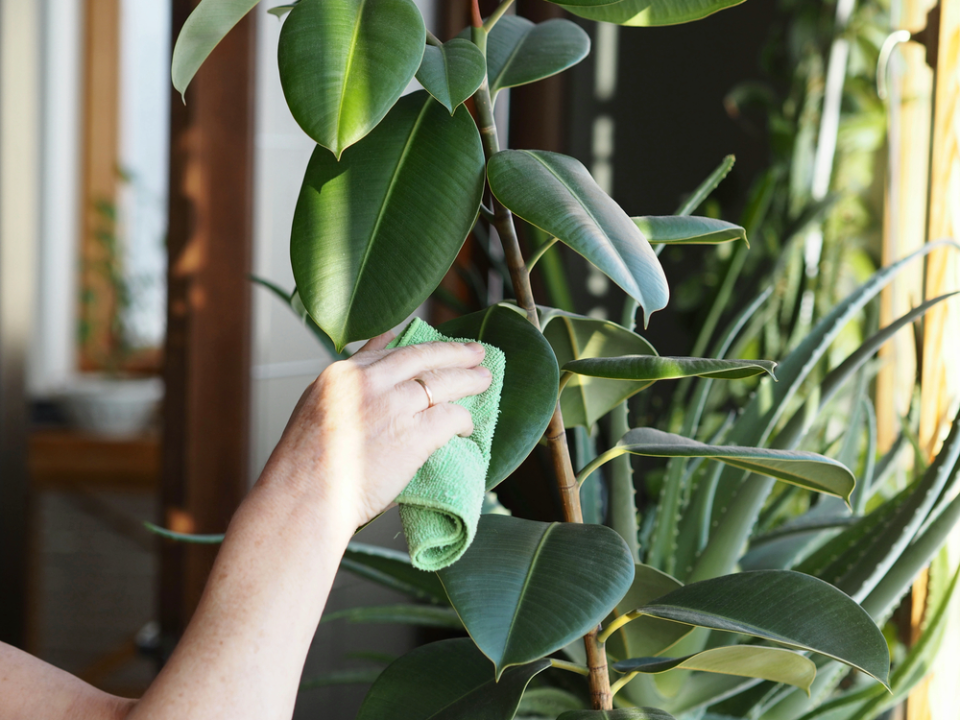
When cleaning houseplant leaves, the simplest method is to wipe them down with a damp cloth. Gently rub the surface of the leaves, being careful not to apply too much pressure that could damage them. This process helps to remove dust and debris that can block sunlight, which plants need for proper photosynthesis.
For larger leaves, you can fold the cloth to reach both sides. For smaller, more delicate plants, a soft microfiber cloth works best as it will not scratch or tear the leaves. This method is effective for most houseplants and ensures that their leaves stay healthy and vibrant.
Use a Soft Paintbrush
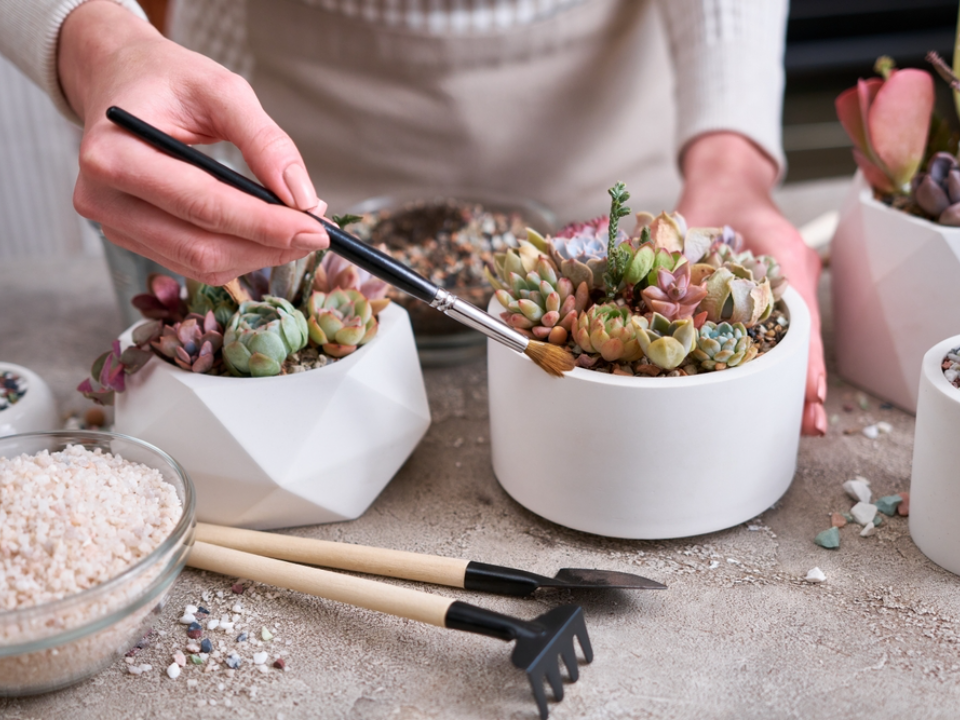
For smaller plants or those with intricate leaf structures, a soft paintbrush is a perfect tool to clean the leaves. The brush can gently sweep away dust and dirt from even the smallest crevices of the plant. This is especially useful for plants with fuzzy or textured leaves that could be damaged by a damp cloth.
Take care to use a brush with soft bristles to avoid harming the plant. This technique can be done more frequently and is ideal for delicate houseplants that require extra care. It also ensures that no water will drip down onto the plant’s soil, which can cause it to become soggy.
Shower Your Plants

Another excellent way to clean the leaves is to give your plants a gentle shower. Place the plant in your bathtub or shower and use a fine spray nozzle to rinse the leaves with lukewarm water. This will remove dust, dirt, and any insects that might be clinging to the leaves.
Ensure that the water is not too hot, as extreme temperatures can shock the plant. This technique is particularly effective for larger plants or those with thick foliage. It is also a great way to hydrate your plants while cleaning them at the same time.
Avoid Over-wetting the Leaves
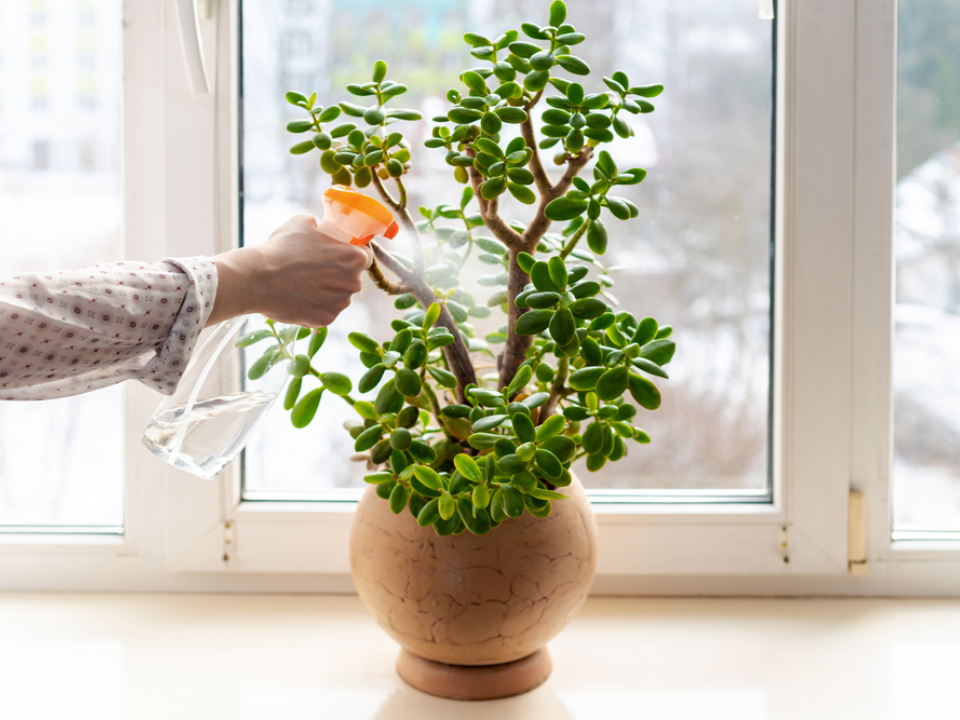
While it’s important to clean houseplant leaves, over-wetting them can lead to problems. Excess moisture on the leaves can cause fungal or bacterial growth, especially in plants that do not thrive in high humidity. Always dry the leaves after cleaning them to prevent this from happening.
When using a damp cloth or any water-based cleaning method, ensure that the leaves are not left with water droplets. A gentle shake of the plant or blotting with a dry towel can help remove any excess moisture. By keeping the leaves dry, you protect your plants from potential diseases.
Regularly Dust Your Plants

Dust accumulation can harm your houseplants over time. It blocks light from reaching the leaves and can lead to poor growth. Regular dusting is essential to maintain the health of your plants, and it can be done with a soft cloth or a gentle vacuum.
Dusting should be a part of your plant care routine, especially for plants with large, flat leaves that attract dust. Avoid using harsh or abrasive materials that could damage the surface of the leaves. Regular cleaning helps your plants to thrive by ensuring that they can absorb the maximum amount of sunlight.
Use Neem Oil for a Natural Shine
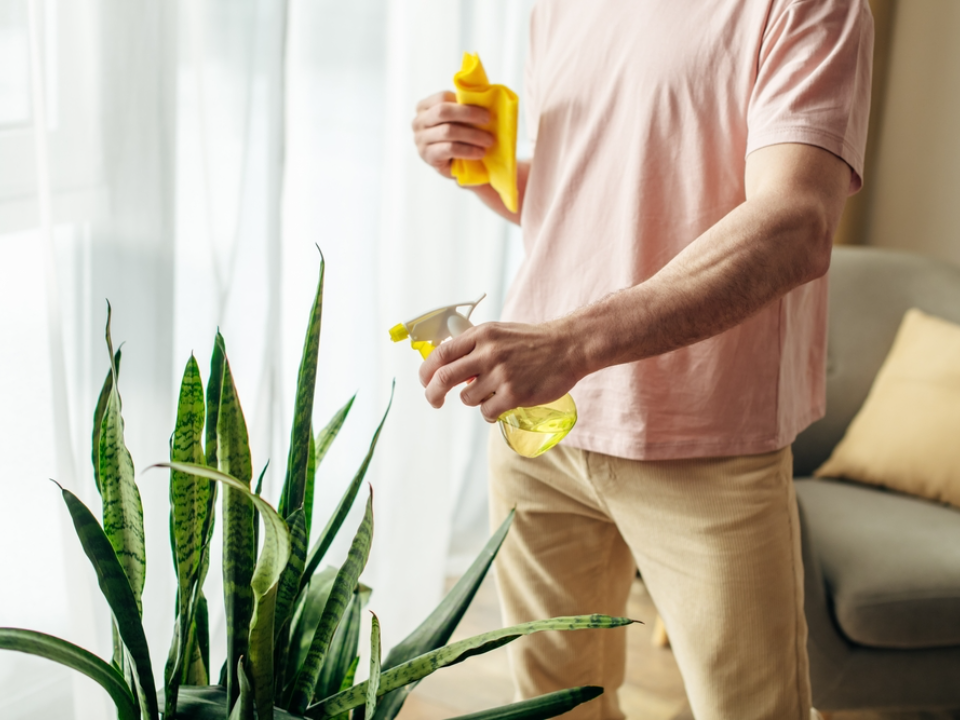
For a natural shine and extra leaf protection, neem oil can be a great addition to your cleaning routine. Dilute the oil with water and apply it with a soft cloth. Not only does it clean the leaves, but it also acts as a natural pesticide to keep pests at bay.
Neem oil is gentle on the plant and does not harm the environment. However, use it sparingly as too much oil can leave a residue that makes the leaves look dull. This solution is perfect for keeping your plants both clean and healthy.
Check for Pests While Cleaning
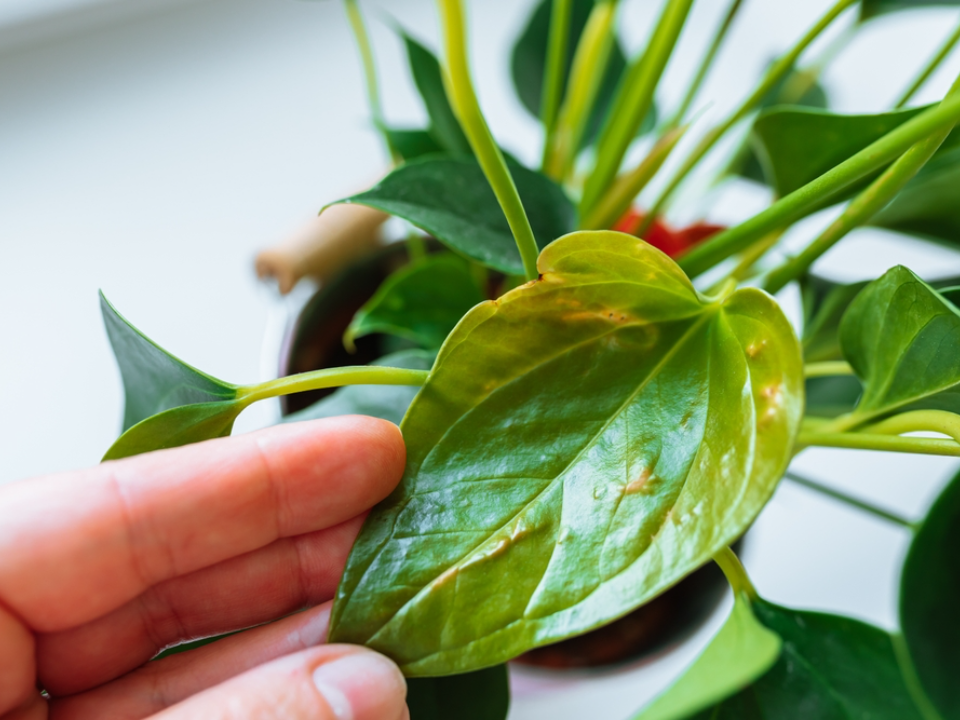
Cleaning the leaves is also an opportunity to inspect your plants for pests. Look for any signs of small insects or webs that could indicate a pest infestation. If you notice pests, clean the affected area immediately using a soapy water solution or neem oil.
Make sure to check both sides of the leaves and around the stems where pests tend to hide. Regular cleaning and pest inspections can prevent infestations from damaging your plants. Early detection is crucial for keeping your houseplants in top condition.
Use Leaf Shine Products Sparingly

There are commercial leaf shine products available, but they should be used cautiously. While they can provide a glossy finish, they often contain chemicals that can clog the pores of the leaves. If you choose to use these products, apply them lightly and only on the tops of the leaves.
Natural alternatives like neem oil or even olive oil can provide a similar shine without the risks. Overuse of these products can lead to the buildup of residue on the leaves, which may block the plant’s ability to breathe. Always test the product on a small area before applying it to the entire plant.
Prune Dead or Damaged Leaves

Another important aspect of keeping houseplant leaves clean is removing dead or damaged leaves. Pruning encourages healthy growth and helps the plant focus its energy on the remaining leaves. It also improves air circulation around the plant, preventing mold or mildew buildup.
Use sharp, clean scissors to remove any unwanted leaves. By regularly checking for and removing dead leaves, you keep the plant looking tidy and healthy. This simple step helps to maintain the overall appearance and well-being of your houseplants.
Keep Your Plant’s Environment Clean
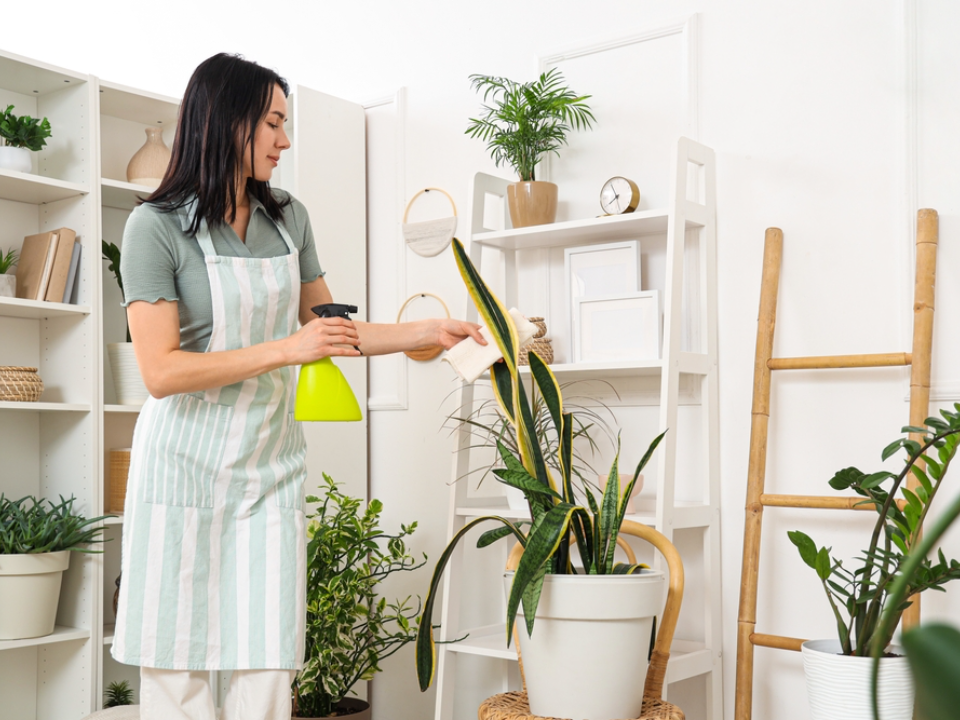
The cleanliness of your plant’s environment is just as important as cleaning the leaves themselves. Ensure that the area where your plant resides is free from excess dust and debris. Regularly clean the windowsills, shelves, or tables where your plants are placed.
A clean environment reduces the likelihood of pests and diseases, providing your plants with the best conditions to grow. It also prevents dirt from constantly collecting on the leaves, making your cleaning routine much easier. By maintaining a tidy space, you promote a healthier living environment for both you and your plants.
Avoid Using Harsh Chemicals
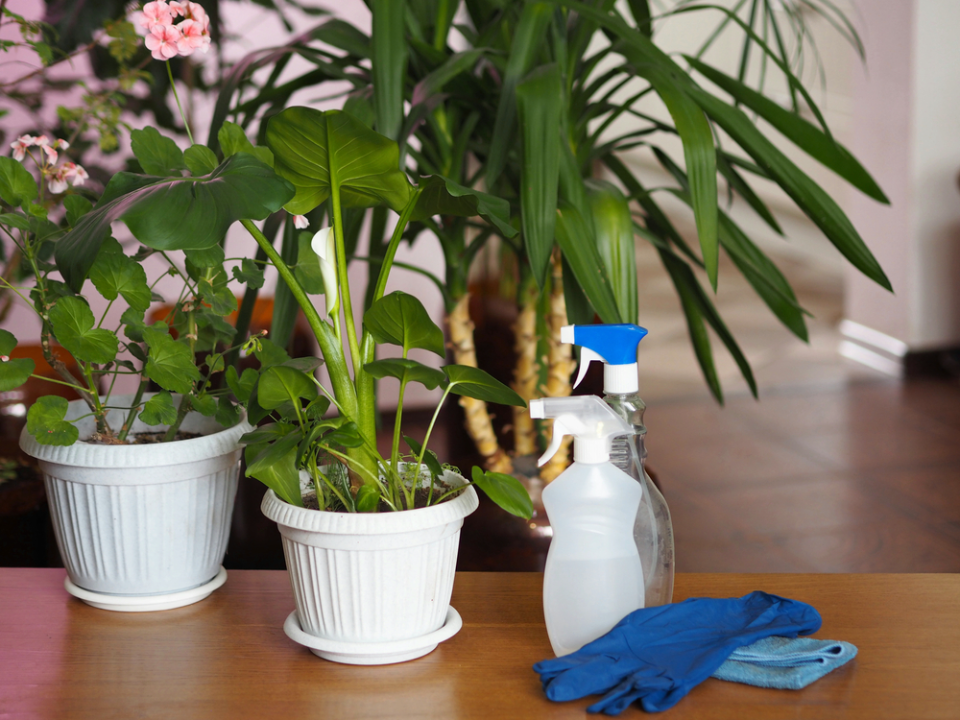
When cleaning houseplant leaves, avoid using harsh chemicals or cleaners that could damage the plant. Chemical cleaners can be too strong for delicate leaves and may leave harmful residues behind. Stick to natural cleaning solutions like water, mild soap, or neem oil to keep your plants safe.
Using gentle, plant-friendly products ensures that your plants stay healthy and free from harmful chemicals. These natural options are not only safer for the plants but also for the environment. Always opt for the most natural cleaning method possible when caring for your plants.
Keep Plants Away from Direct Airflow
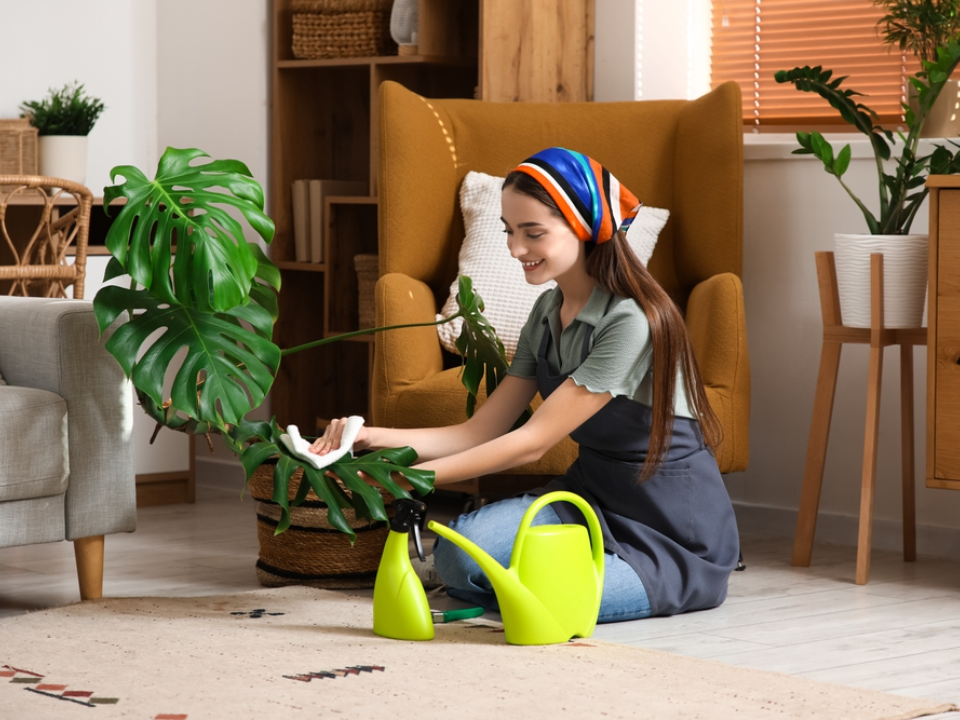
While cleaning, it is also essential to consider your plant’s location. Strong air currents from fans or air conditioning can dry out the leaves and cause them to become dusty quicker. Try to place your plants in areas with steady airflow that is not too harsh on the leaves.
Additionally, direct air from air conditioning or heating systems can lead to dehydration and stress for your plants. A calm environment with consistent temperature and humidity will keep your plants’ leaves cleaner and healthier. Make sure the plant’s environment suits its needs for optimal growth.
Keep Soil Clean to Prevent Mold
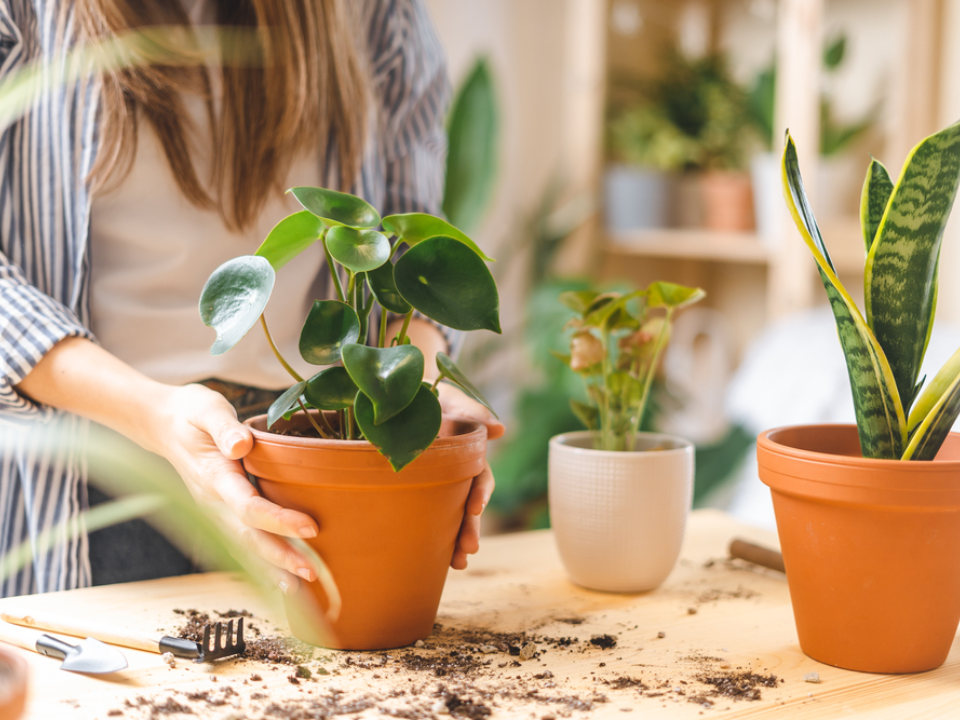
Mold and fungi can develop in the soil if it is not kept clean. When cleaning the leaves, also take the time to inspect the soil and remove any excess water or debris that could contribute to mold growth. Mold can easily spread to the leaves and cause health issues for the plant.
Be careful not to overwater your plants, as excess moisture in the soil encourages mold growth. Use a gentle brush or vacuum to clean the soil’s surface, removing any visible debris. By keeping the soil clean, you help prevent mold from becoming a problem for your plants.
Avoid Cleaning During the Day

It’s better to clean your houseplant leaves when the plant is not exposed to direct sunlight. Sunlight can cause the leaves to dry out or get damaged after being cleaned. Ideally, clean your plants in the morning or evening when they are not actively exposed to light.
This will allow the plant time to dry properly without risking sunburn or dehydration. The cooler temperatures during these times also help to reduce the stress on the plant. By cleaning when the plant is not in direct sunlight, you ensure a safer and more effective cleaning process.
Clean the Plant Pot
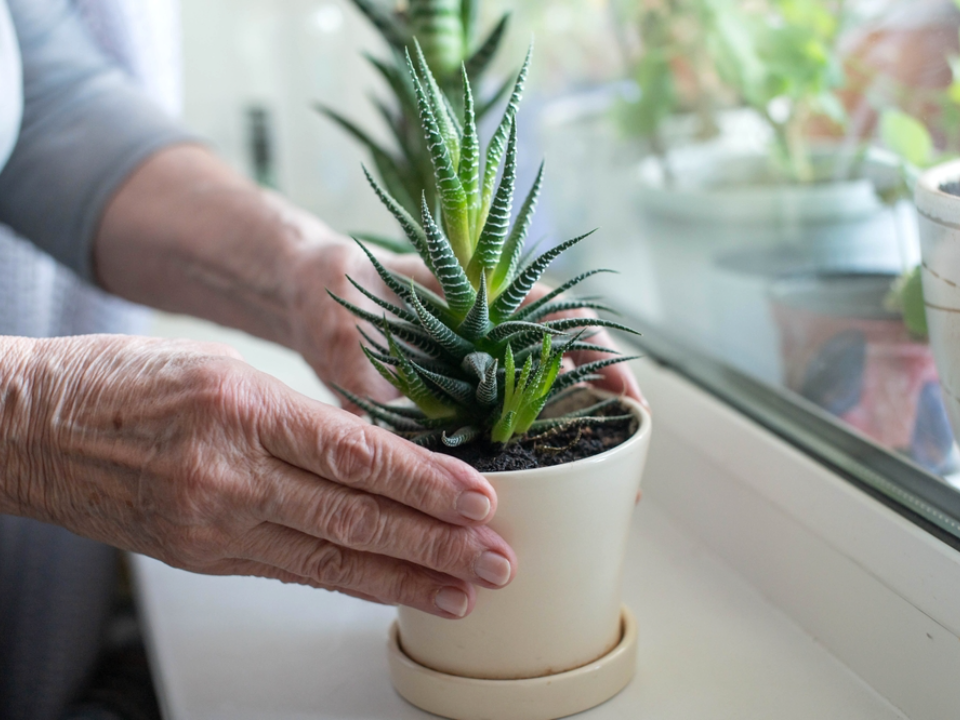
While cleaning the leaves, take the time to clean the plant pot as well. Dust and grime can accumulate on the exterior of the pot, making it look unsightly. Wipe down the pot with a damp cloth or sponge to keep it looking neat and fresh.
A clean pot contributes to the overall health of your plant by preventing the spread of dirt and pests. It also creates a more pleasant aesthetic for your indoor garden. Regular pot cleaning should be a part of your plant care routine, ensuring that both the plant and its environment remain in optimal condition.
This article originally appeared on Avocadu.
